Does writing persuasive copy set your brain on edge?
Although your writing skills may be top-notch, let’s get real. Copywriting challenges even the most confident writers.
How do you write effective copy if you’re not sure of the best approach?
Let’s ease your mind by demystifying some common sales writing techniques, shall we?
We’ll start with a definition of persuasive copy, then drill into some sure-fire persuasive copywriting techniques (with examples) that’ll kick your writing insecurities to the curb.
Let’s go!
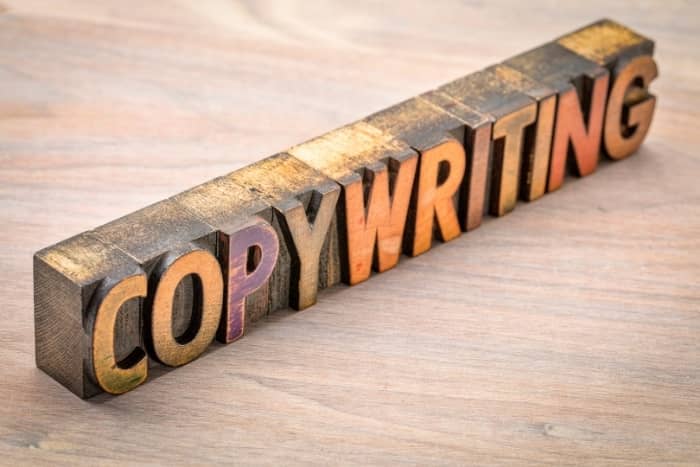
What is Persuasive Copy?
Persuasive copy is written material that’s crafted to convince readers to take some type of action.
Copywriting often takes the form of persuasive sales copy with a strong call to action (CTA) that solicits the audience to buy something.
As consumers, we’re bombarded by a steady stream of social media ads, e-commerce web pages, content marketing, podcasts, sales letters, and email campaigns that target (and often influence) our purchasing decisions.
Let’s take a closer look at some examples of compelling copy to unveil a few strategic tips and tricks of the trade.
Ready to crack the code?
7 Secrets for Crafting Killer Copy

In this section, we’ll break down the key secrets to writing good copy.
Let’s start by reverse-engineering the first of our seven persuasive copywriting tricks.
1. Make It About Them
No surprise, effective copywriting makes the most of good ol’ psychology.
Ironically, effective sales copy is focused on addressing the target audience’s thoughts or sentiments about the product more than describing the product itself.
Copywriters brainstorm emotional triggers of their potential customers (like trust, guilt, or fear of missing out) and offer the promise of emotional resolution for each pain point through their writing.
How to write creative copy that touches emotions?
- Reflect on the product as apprehensive customers would, then
- Use power words to trigger customers’ emotions,
- Engage their senses for emphasis, then
- Explain how your product solves their emotional need.
The clever “transparent testimonial” on Johnny’s Selected Seeds landing page triggers their customers’ strong need to belong. The simple greeting acknowledges their loyal customers (as growers) while assuring uncertain novices that they’re in the company of proven, veteran gardeners:
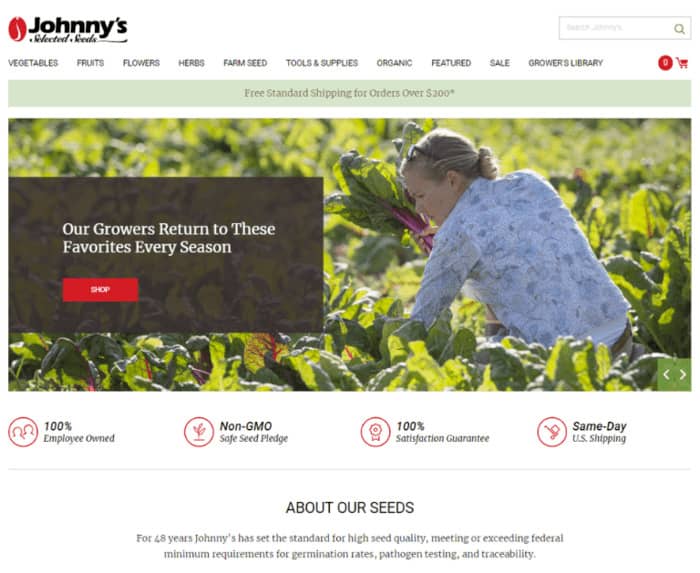
This economy of words also helps demonstrate our next technique.
2. Keep It Short & Simple (K.I.S.S.)
By using short, easy-to-read sentences, persuasive copywriting “speaks the language” of your target audience.
Conversational copy is less intimidating and keeps the reader’s attention.
How to write no-fluff conversational copy?
- Limit paragraph length,
- Write with clarity, and
- Avoid flabby filler words.
The conversational tone of Hunter Fan Company’s landing page copy expresses volumes of consumer information with limited words:
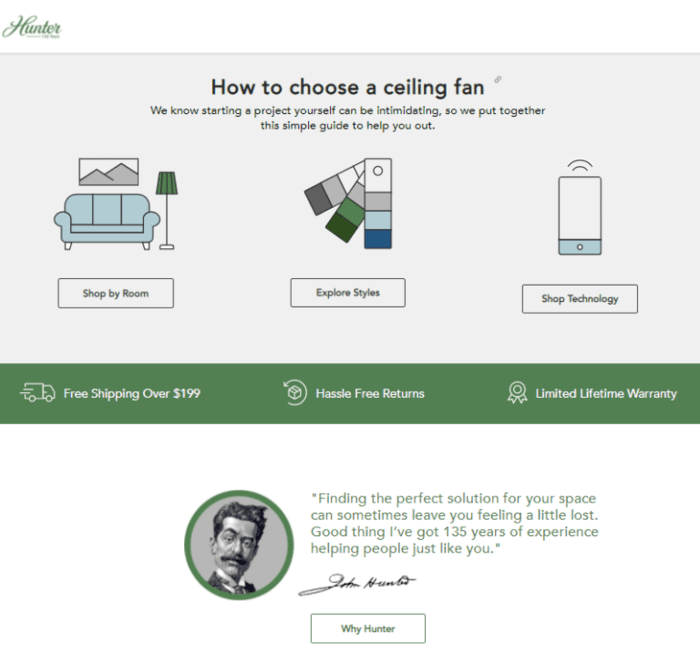
- Simple CTA button copy links to product how-tos and searches.
- Power words (free, hassle-free, and lifetime) in rapid succession emphasize their superior customer service.
- And, the empathetic quote provides a glowing testimonial. (More about testimonials in just a moment.)
Olive Garden marketers make mouths water with an extremely simple but potent combination of alliterative power words overlaid on their homepage video ad:
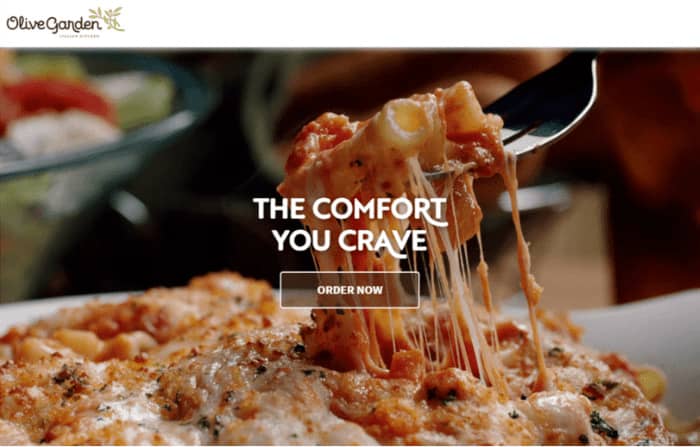
Seduced patrons can’t click the ORDER NOW button fast enough!
However, other products need more explanation to persuade hesitant consumers to act.
3. Demonstrate the Benefits
Perceived product values increase when prospective customers know how the product will improve their lives.
Here’s where emphasizing product benefits adds extra oomph when writing copy.
So, how do you demonstrate product benefits?
- Provide consumers with why the product will make their lives better
- Be specific, avoiding generic claims
The straightforward persuasive writing formula of Dave Ramsey’s 7 Baby Steps infographic makes it easy for consumers to know how they’ll benefit from following his money management plan.
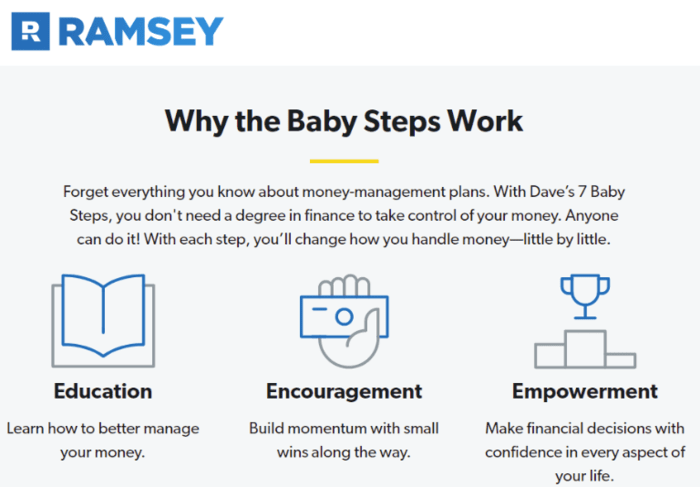
Note the emphasis of product benefits over features:
- Features are parts of a product (tool to track a budget), versus
- Benefits are the positive impacts that the product makes on the potential customer (learn how to better manage money).
Incidentally, the combination of the power of three and a literary device called assonance helps to increase conversion rates on Dave’s web copy. CRO (conversion rate optimization) is a copywriting strategy that improves sales conversions, similar to how SEO improves search engine rankings.
But even after showing benefits, the prospective customer’s doubts may persist.
4. Overcome Objections
(No buts about it) Your job as a copywriter is to squash the “I can’t buy this because” objections even before they’re thoughts in the buyer’s mind.
How do you overcome the reader’s objections?
- Brainstorm reasons why your customers may balk at buying the product. (Hint: the reason isn’t always money!)
- Acknowledge their concerns, and
- Reiterate how product benefits address their concerns.
Stitch Fix addresses common preconceived notions about their personalized shopper service on their women’s shopping landing page:
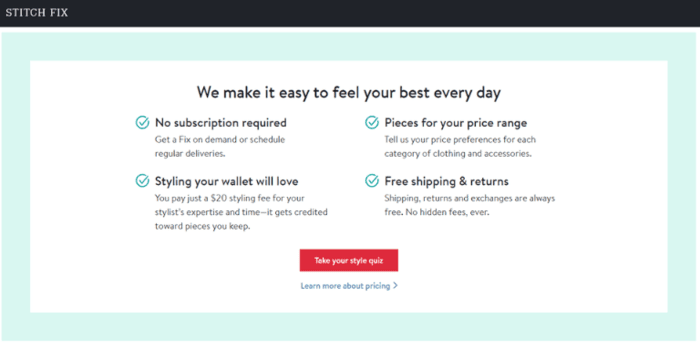
You can almost hear prospective customers asking:
- Are there hidden fees (subscription, shipping, or returns)?
- What about the clothing quality?
- Can I stay within my budget?
Imagine a customer’s surprise, “Hey, they read my mind!”Objections addressed, the copy offers some call-to-action options to maintain customer engagement on the site.
5. Tell A Story (Fascinate Them)
What if your readers don’t know much about your product? Tell ‘em a story about it and they’ll be drawn in like scouts ‘round the campfire.
Effective storytelling influences readers’ emotions and constructs a product demonstration (of sorts) in their minds. This technique is especially useful for expressing intangible attributes like quality.
How to tell a persuasive story?
- Paint a picture in your readers’ minds,
- Sprinkle in some optional metaphors,
- Touch the emotions of readers, and
- Challenge readers to respond.
Winemakers are especially good at weaving persuasive stories to promote their wines.
Eberle Winery’s product descriptions fascinate our minds, citing pleasing aromas and palatable sensations, starting with the first sip. And they leave us with a challenge to try it with their suggested food pairings or recipes.
Cheers!
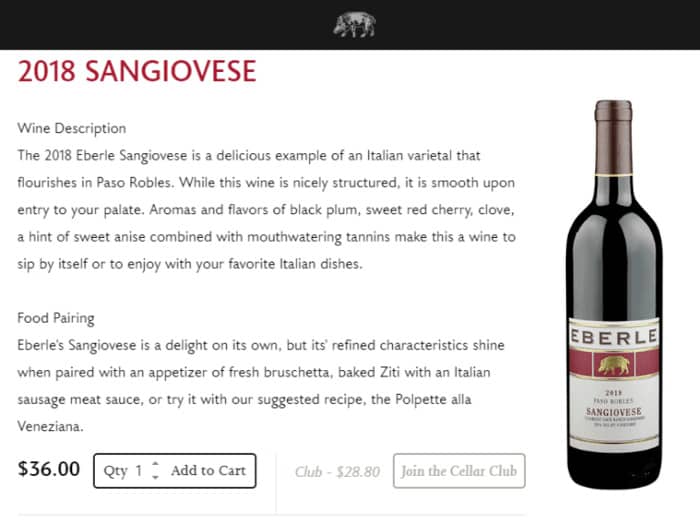
And then there’s the trust factor.
6. Establish Trust (The Credibility Factor)
Why should potential customers choose your widget over another?
Is it better?
Maybe it is, but it doesn’t (really) matter.
If your target audience trusts you more, they’re more likely to buy from you.
Again, it’s all about them.
How do you establish trust and enhance your credibility?
- Publish persuasive (and realistic) testimonials from happy customers to provide “social proof”
- Prove value with technical details (numbers & statistics talk!)
Amy Porterfield’s testimonial page proudly displays treasured product acknowledgments that boast real marketing results from real clients:
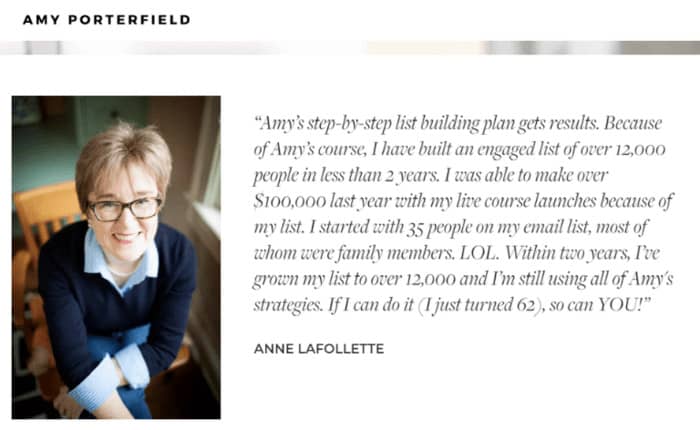
Amy’s course value and credibility are elevated by her client’s straightforward testimonial. Note how it’s so easy to comprehend the value of the course as it relates to Anne’s success expressed with simple, numerical data.
So, what’s next?
7. Show Them the Way
Persuasive copy tells readers what to do next.
Maybe they already know what to do, but why take the chance?
Take Ramit Sethi, for example. The bold title of his New York Times best-seller named “I Will Teach You To Be Rich” practically begs the reader to buy the book. But Ramit’s marketing copy doesn’t risk being passed over.
On his landing page, Ramit figuratively picks up the book and puts it in his readers’ hands by telling them to go on a personal finance self-discovery:
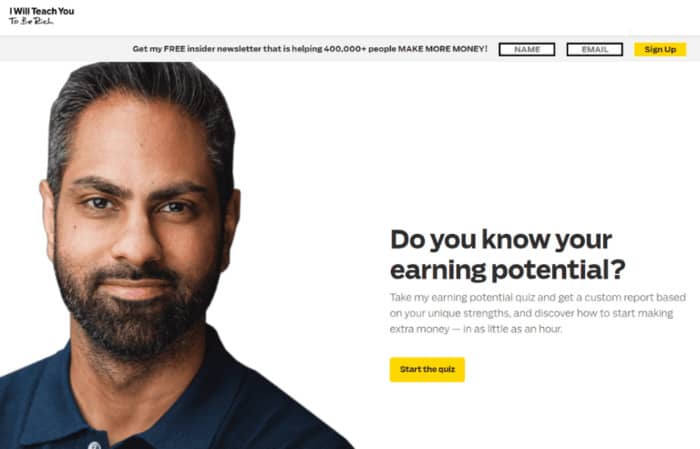
Readers are faced with one simple question and a “Start the quiz” button.
Ramit is blatantly clear about what he wants you to do. Aside from gazing into his beautiful brown eyes or joining his email list, there’s not much more to do!
How to show your audience what to do?
- Use actions words on brightly-colored CTA buttons
- Offer choices (this or that), but don’t leave readers stranded.
Elsewhere on sales pages, Ramit takes readers on their own customized journeys.
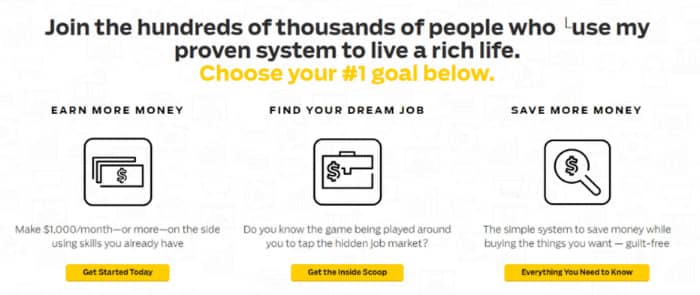
His advice is not one-size-fits-all, so he provides three options (not a coincidence) which helps his conversion rates and his ability to customize instructions Just. For. You.
Genius!
Get Proficient at Persuasive Copy!
So, how do you get better at writing persuasive copy?
The good news is that practicing with these persuasive copy techniques in mind will get you on the right path.
More practice will make you better (Did we mention practice?). Blend in your unique writing style, and copywriting will become easier.
For reference, fill your swipe file with successful copy examples and follow the guidance of others.
Soon you’ll confidently add copywriting skills to your freelance writing resume and land those freelance copywriting jobs!
You can do this!



